Road Signs Trivia You Need to Know
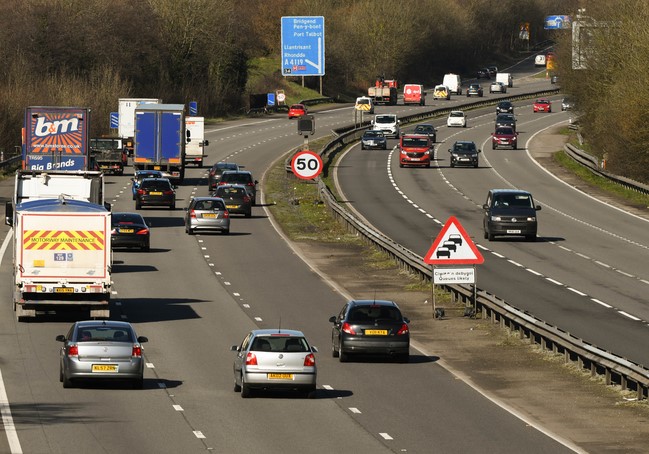
Having driven for months, years, decades, you are 99% sure you have encountered every possible road sign in the UK. Even with the few you haven't yet come across, it should be simply enough to decipher them, shouldn't it?
Not according to Admiral Insurance. They point out that vague road signs, the ones without letters, numbers or directions, can confound even the most self-assured drivers - no matter how long they've been on the road.
So, to herald 25 years of the UK driving theory test, we've pulled together a guide and online quiz that not only explains the rules behind UK road signs, but also provides some invaluable top tips we bet you forgot from your theory test.
Take a look at our helpful road signs run-down, below.
Shapes and colours
From a simple courtesy to a compulsory directive, shape completely changes the meaning of a road sign.
Shape is the critical feature that helps drivers stay safe even when weather events make a sign's text or colour illegible, while colour provides context.
As you'll remember from the Highway Code, we use three basic shapes in the UK (triangles, circles and rectangles) and six colours (red, blue, green, white, brown, yellow).
Triangles
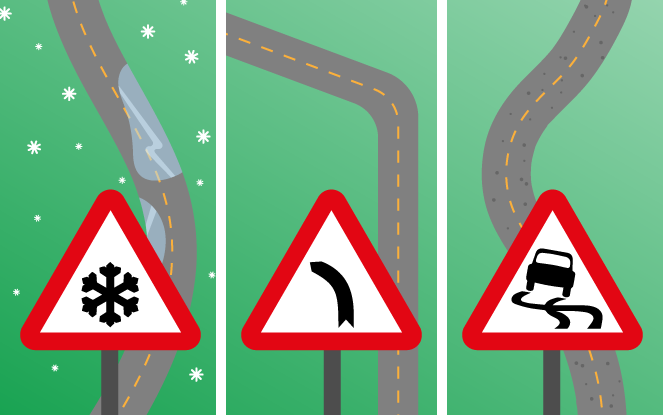
To begin, there is the triangle. A triangle road sign warns oncoming drivers about an upcoming road layout (roundabouts, junctions, two-way traffic) or hazards ahead (ice, sharp bends, slippery road).
Red denotes a prohibition or 'negative instruction', which is most often represented as a triangular sign with a white background and thick red border.
Circles
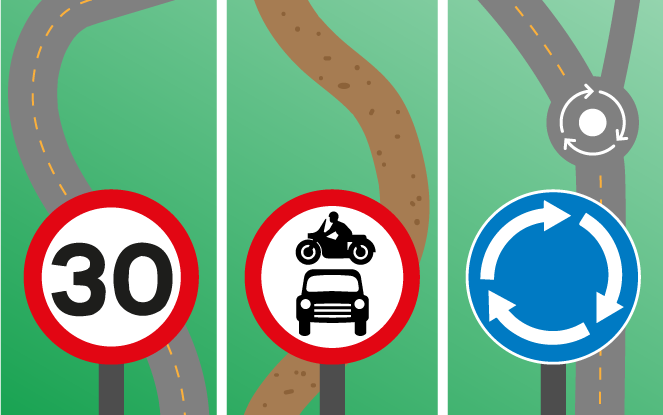
If you spot a circular road sign on your travels, you're being given an order or instruction that must be obeyed.
Circular road signs are usually either red or blue; red denotes a negative instruction ("do not") and blue provides a positive instruction ("do"). That's why "no overtaking" and speed limit signs have a red border, while "turn left" and "right of way" signs have a blue border.
Rectangles
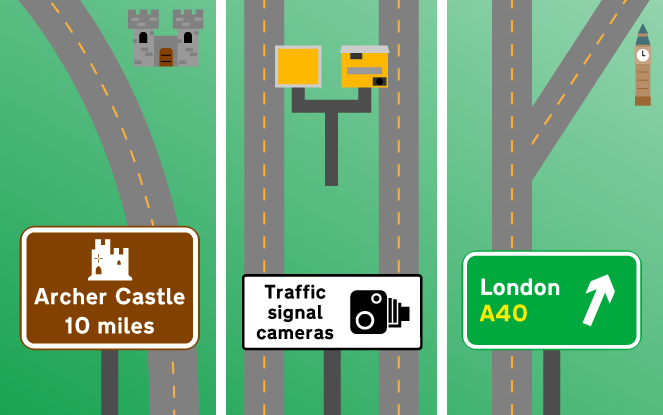
Rectangles are helpful signs that inform oncoming drivers of what's coming up on the road.
Colours vary widely on rectangular signs although motorways and "no through-road" signs are typically blue. Green rectangular signs provide directions on primary roads, white indicates minor roads and speed cameras, and brown denotes tourist information.
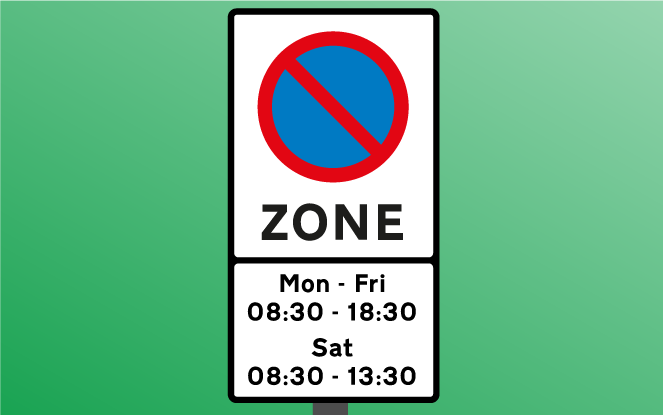
Rectangular signs also convey important, and often complex, information. As such, they sometimes embed other road signs within their shape. For instance, "controlled zone" information is depicted as a white rectangle with a blue and red "no waiting" circle embedded in the shape.
Exceptions to the rules
While we always advise you follow the Highway Code to the letter, there are some notable exceptions to common road signs rules which should not be ignored.
STOP signs
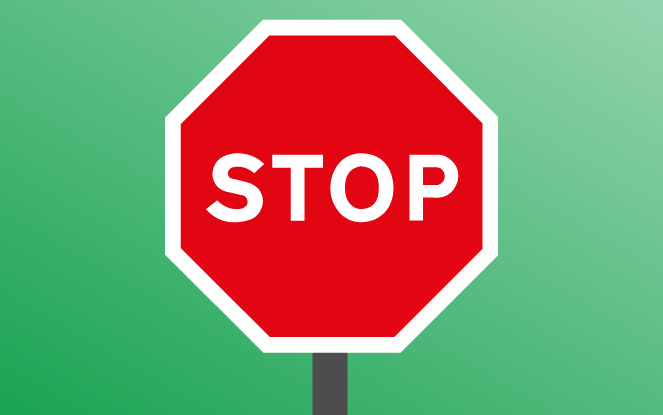
"STOP" signs are one of few road signs which do not fall within the triangle, circle, or rectangle triumvirate. Rather, they are octagon-shaped.
The unique shape of an octagon alerts drivers to the urgent STOP message – all without having to read the sign's wording. The reason being that even while travelling in the opposite direction or if defaced by snow*, drivers from both directions clearly see a STOP sign.
*Extra trivia: Do you know why signs always have rounded corners? They're safer for passers-by (no sharp edges) and are more resistant to rain and snow.
Yield signs
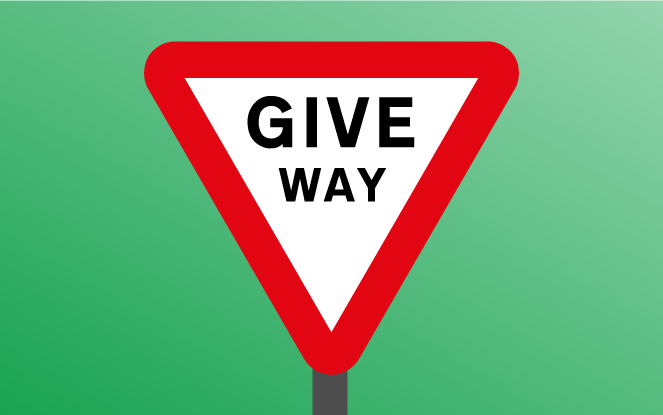
Similarly, some triangle signs are positioned upside-down to make their messaging more distinctive. These inverted triangles are called "yield signs".
Yield signs are critical as they instruct drivers to prepare to stop for oncoming traffic. Where the yield sign is applied differs around the world but, in the UK, they are used only on "GIVE WAY" signs.
Yellow signs
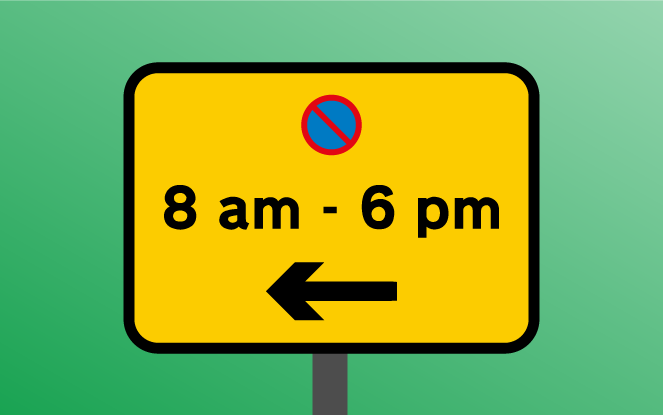
Yellow is a maverick sign colour. This colour pops up sporadically and could mean all manner of instructions depending on where it's situated.
For instance, a sign with a yellow background could denote diverted traffic details, enforcement hours for parking charges, and many more. There are few hard and fast rules for yellow – which is why signs with a canary complexion are typically misunderstood on theory tests.
Strikethrough circles
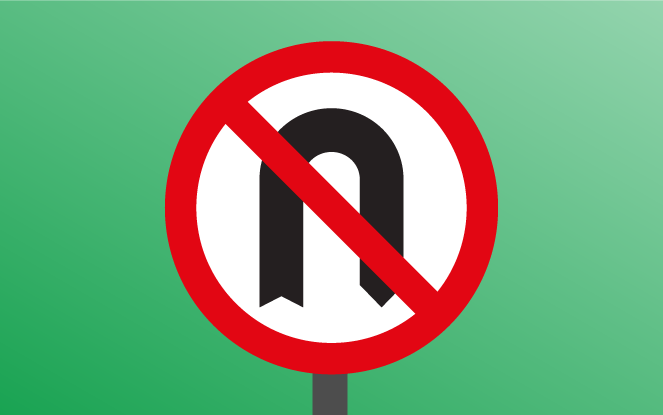
While many prohibitive circles (i.e. those with a red border) do not include a strikethrough to indicate a negative instruction, confusingly, a handful do.
Circles which have a red border and a red strikethrough are largely applied to turning orders, such as "no U-turn" or "no left/right turn" signs. Oddly, the red border alone represents a prohibition/warning, which makes the strikethrough redundant.
So, why is it there? Our best guess is that a thick red diagonal line draws extra attention to notices where, if not followed, could cause a serious head-on collision.
Mixed colour signs
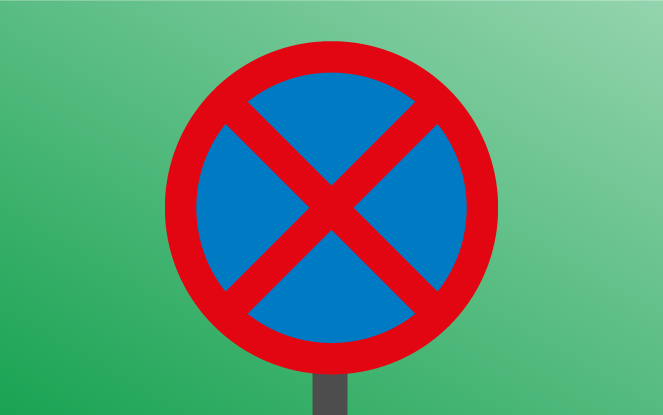
Colour combinations in road signs are confusing - and all too common.
If you're stuck, the golden rule is to rank the colours in order of urgency: red is most important, then blue, and all the rest thereafter.
Consequently, when you see a red and blue "no stopping" or "no waiting" sign, you should follow the red "warning" first. As you already know that red represents a prohibitive order, you're therefore able to infer that this sign is conveying a negative instruction - and therefore you should "stop" or "wait", depending on the respective sign.
Additional trivia
Did you know there are two special typefaces used only on British roads?
The first is Transport, which uses mixed-case wording, as seen on all fixed permanent signs except motorways. Mixed-case is preferred over 'all capitals' for the simple reason that word spaces are more prominent and therefore easier to read.
The second typeface is called Motorway. As you'd expect, this is the typeface for motorway signs, and is different from Transport as it uses elongated lettering and the numbers are larger.
Now you've learned all there is to know about road signs, it's time to put your newfound knowledge to the test. Have a go at our taxing 50/50 quiz to see how you compare against the rest of the UK.